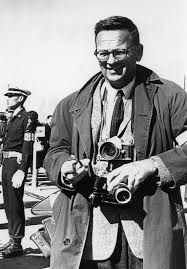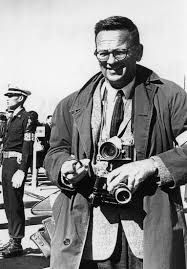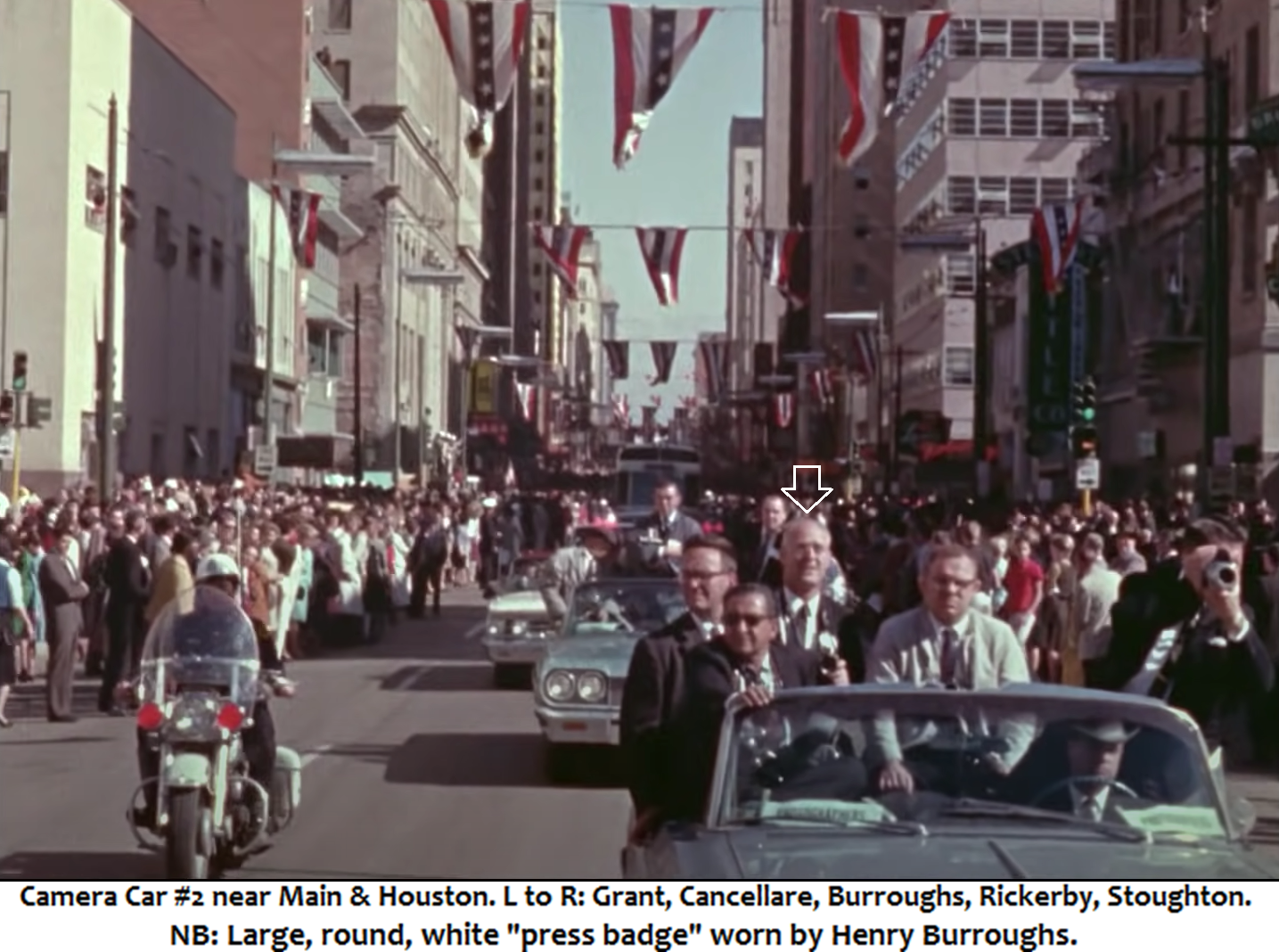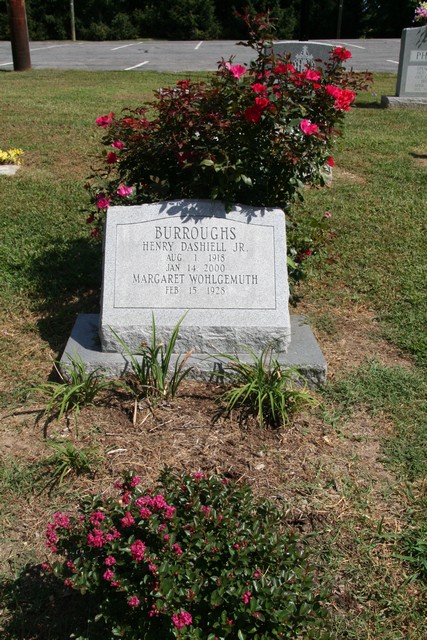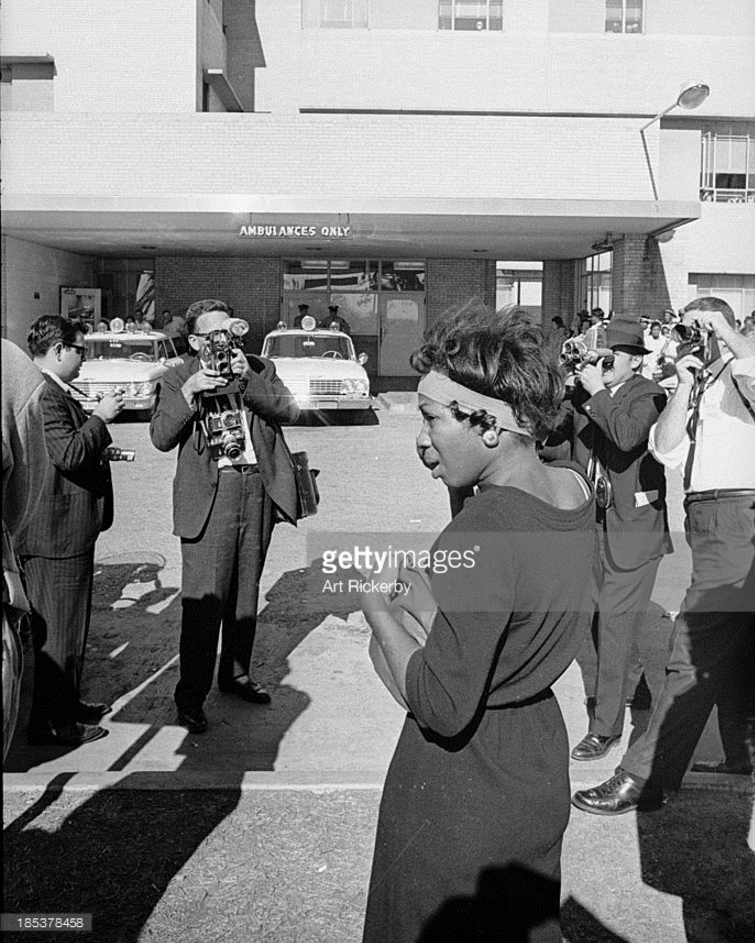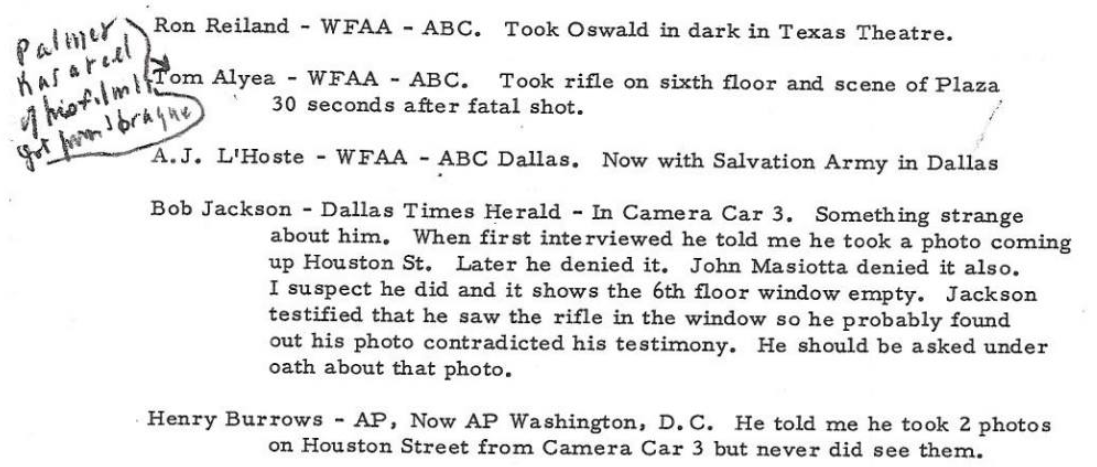On 11/22/63 he was in JFK's motorcade in Camera Car #2 (still cameramen), including Clint Grant, DMN, Frank Cancellare, UPI, Capt. Cecil Stoughton, WHCA - White House Photographer and Art Rickerby-LIFE. He began his day taking photographs of JFK & Jackie working the fence-line shaking hands at Love Field. In a 1998 letter to JFK and Secret Service researcher and author, Vince Palamara he recounted:
"I was a member of the White House pool aboard Air Force One when we arrived with JFK in Dallas on that fateful day. We, the pool, were dismayed to find our pool car shoved back to about #11 position in the motorcade. We protested, but it was too late. The President had come to Texas primarily to mend political fences. That of course was the reason he brought Mrs. Kennedy too. The cars in the motorcade behind the President's and Secret Service and wire service car were all filled with local politicians. After the President's limousine turned the corner at the book depository we could not see him, but we heard the shots and the motorcade stopped. Looking across the park, in the far distance, I spotted the Queen Mary (the Secret Service follow-up car). An agent was standing and displaying an automatic rifle. Very unusual; I had never seen them display weapons before. That's when we knew for sure that something very serious had occurred. Maj. Cecil Stoughten [sic], White House official photographer, convinced our driver, a local sheriff, to get out of the motorcade, and we eventually arrived at Parkland Hospital. The scene at the emergency entrance was utter chaos. The limousines that had carried the Presidential party and the Vice-Presidential party were askew. An agent with a stainless steel hospital bucket was cleaning up the rear seat of the President's limousine. Flowers were strewn over rear seats of both limos. A handful of people had clustered across the roadway. Many were crying. Secret Service had blocked off entrance to the Hospital, but after a short while Malcolm Kilduff, Assistant Press Secretary, came out and told me that things looked pretty bad. The President was in serious condition.Short while later, Kilduff called a press conference in one of the hospital classrooms and made the official announcement that the President was dead. I was the only AP man at that briefing. I ran out looking for an AP reporter or a phone; spotted Jack Bell, AP's top political reporter, on a hospital office phone. I reported what I had. He handed me the phone and said, "dictate it."Shortly afterward, Frank Cancellare, UPI photographer, and I, wandered out to the hospital entrance looking for some sign of the Presidential party. We saw a limousine speeding off,and through the rear window we could spot that unmistakable pill box hat of Jacqueline Kennedy's. We grabbed a cab and headed for Air Force One at Love Field. When we ar-rived, Air Force One had been cordoned off by Army troops, but the ramp was still in place. Before we could worry about what to do, the plane door opened and out popped Maj. Cecil Staughten [sic]. He saw us standing by and came over. He had a roll of film in his hand, and announced that he had just photographed the swearing-in of President Johnson, and asked me if AP would process the pictures and pool them with UPI. Cancellare and I readily agreed and that's how that famous picture aboard Air Force One was transmitted to the world. Hope this is of some help. You are the first historian to ask me about that tragic day."
Like many other witnesses in Dealey Plaza, he reported hearing 4 shots, rather than 3, and his wife, Peg, said he stated so until the day he died.
Rest in Peace...
~Linda (48291572)
On 11/22/63 he was in JFK's motorcade in Camera Car #2 (still cameramen), including Clint Grant, DMN, Frank Cancellare, UPI, Capt. Cecil Stoughton, WHCA - White House Photographer and Art Rickerby-LIFE. He began his day taking photographs of JFK & Jackie working the fence-line shaking hands at Love Field. In a 1998 letter to JFK and Secret Service researcher and author, Vince Palamara he recounted:
"I was a member of the White House pool aboard Air Force One when we arrived with JFK in Dallas on that fateful day. We, the pool, were dismayed to find our pool car shoved back to about #11 position in the motorcade. We protested, but it was too late. The President had come to Texas primarily to mend political fences. That of course was the reason he brought Mrs. Kennedy too. The cars in the motorcade behind the President's and Secret Service and wire service car were all filled with local politicians. After the President's limousine turned the corner at the book depository we could not see him, but we heard the shots and the motorcade stopped. Looking across the park, in the far distance, I spotted the Queen Mary (the Secret Service follow-up car). An agent was standing and displaying an automatic rifle. Very unusual; I had never seen them display weapons before. That's when we knew for sure that something very serious had occurred. Maj. Cecil Stoughten [sic], White House official photographer, convinced our driver, a local sheriff, to get out of the motorcade, and we eventually arrived at Parkland Hospital. The scene at the emergency entrance was utter chaos. The limousines that had carried the Presidential party and the Vice-Presidential party were askew. An agent with a stainless steel hospital bucket was cleaning up the rear seat of the President's limousine. Flowers were strewn over rear seats of both limos. A handful of people had clustered across the roadway. Many were crying. Secret Service had blocked off entrance to the Hospital, but after a short while Malcolm Kilduff, Assistant Press Secretary, came out and told me that things looked pretty bad. The President was in serious condition.Short while later, Kilduff called a press conference in one of the hospital classrooms and made the official announcement that the President was dead. I was the only AP man at that briefing. I ran out looking for an AP reporter or a phone; spotted Jack Bell, AP's top political reporter, on a hospital office phone. I reported what I had. He handed me the phone and said, "dictate it."Shortly afterward, Frank Cancellare, UPI photographer, and I, wandered out to the hospital entrance looking for some sign of the Presidential party. We saw a limousine speeding off,and through the rear window we could spot that unmistakable pill box hat of Jacqueline Kennedy's. We grabbed a cab and headed for Air Force One at Love Field. When we ar-rived, Air Force One had been cordoned off by Army troops, but the ramp was still in place. Before we could worry about what to do, the plane door opened and out popped Maj. Cecil Staughten [sic]. He saw us standing by and came over. He had a roll of film in his hand, and announced that he had just photographed the swearing-in of President Johnson, and asked me if AP would process the pictures and pool them with UPI. Cancellare and I readily agreed and that's how that famous picture aboard Air Force One was transmitted to the world. Hope this is of some help. You are the first historian to ask me about that tragic day."
Like many other witnesses in Dealey Plaza, he reported hearing 4 shots, rather than 3, and his wife, Peg, said he stated so until the day he died.
Rest in Peace...
~Linda (48291572)
Family Members
Sponsored by Ancestry
Advertisement
Explore more
Sponsored by Ancestry
Advertisement
